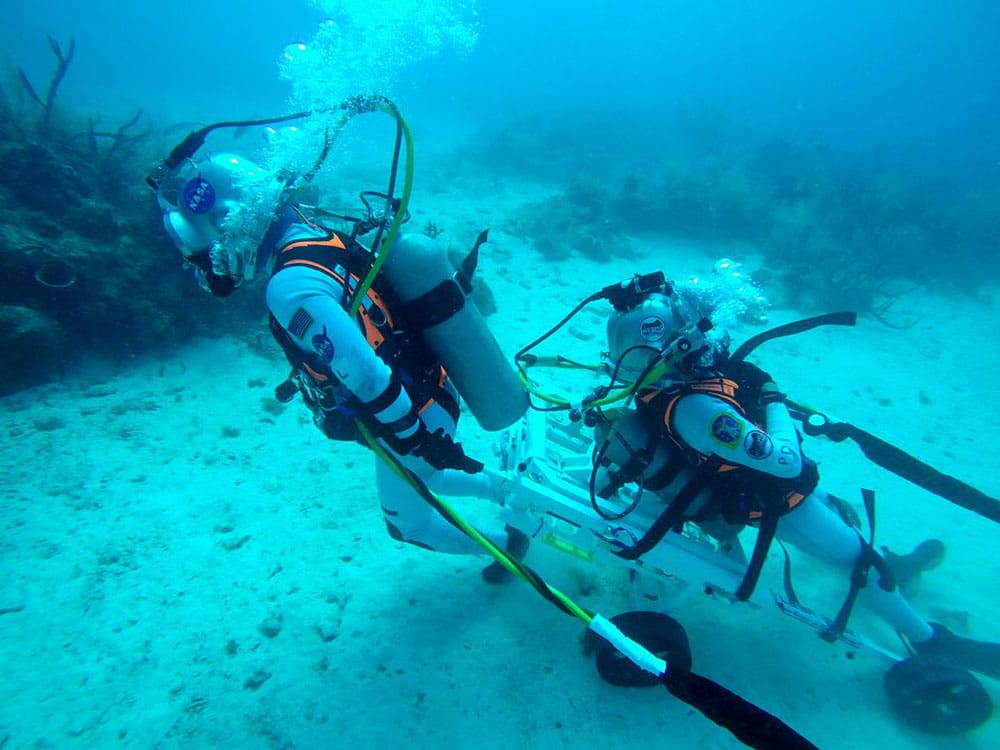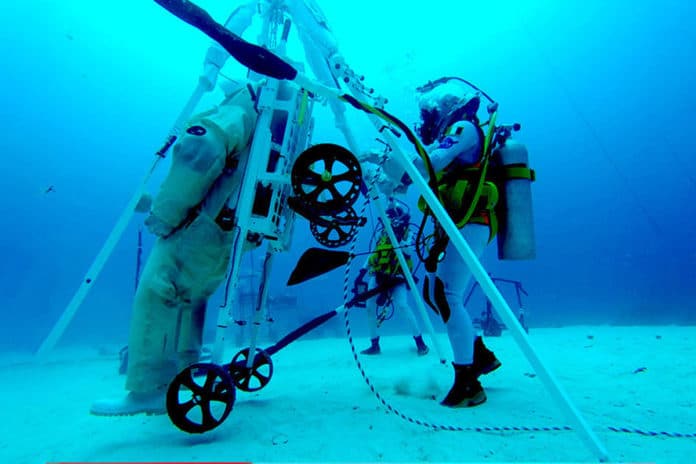The European Space Agency (ESA) recently tested a device which is designed to assist in astronaut rescue missions on the surface of the Moon. According to the ESA, it is the world’s first device aimed to help future incapacitated astronauts.
The device called the Lunar Evacuation System Assembly (LESA) is a pyramid-like structure that can be operated by a single astronaut to help rescue an injured astronaut on the surface of the moon. The device is meant to save incapacitated astronauts by lifting them onto a mobile stretcher. LESA can also be easily ‘transported like a golf caddy’ according to the ESA.
The astronauts can then safely bring their crewmate to the lander. This entire process of deploying and securing their crewmate to the stretcher should take less than 10 minutes, ESA says.

With its rocky, sandy terrain and warm salty water, the bottom of the ocean floor has more in common with the lunar surface than you might imagine. And hence the two members of NASA’s NEEMO 23 mission are testing the device at the Aquarius laboratory some 62 feet (19 meters) below the surface, six miles off the shore near Key Largo, Florida.
The Extravehicular Activities (EVA) suits that astronauts wear are bulky, heavy, and that’s the reason they do not allow for a full range of movement.
“There is no way an astronaut could carry their fallen crewmate over their shoulder while wearing an EVA suit,” ESA head of spacewalk training Hervé Stevenin says. “Our objective was to bring all the rescue actions into the working range of the EVA-suited astronaut to ensure a rapid and safe rescue.”
“LESA can be transported like a golf caddy and placed close to the fallen astronaut to provide a lifting mechanism and a stretcher that is easy to maneuver. Once the rescuer has used the device to lift their crewmate and attach the stretcher to their back, they add wheels to the stretcher and transport them to safety.”
ESA astronaut Pedro Duque and NASA astronaut Kjell Lindgren tested an earlier prototype during NASA mission NEEMO 22 in 2017.
